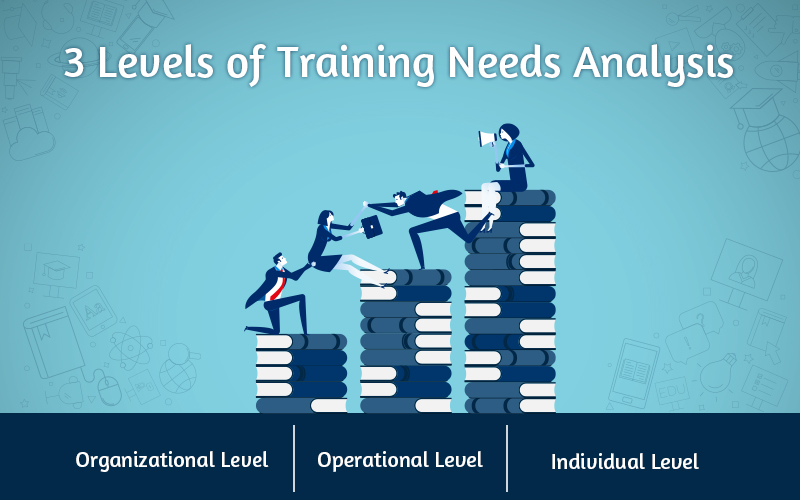Six Sizzling Benefits of Training Needs Analysis – Part 2

In the first blog of this beginner series, we discussed ‘What is Training Needs Analysis?‘. Training Needs Analysis (TNA) provides insights and concrete data to identify the training needs within an organization. By conducting a TNA, you can align corporate training with the business needs of your company. This blog shares SIX advantages of a well conducted Training Needs Analysis.
→ Download eBook: Become an eLearning Champion!
1. Identify performance gaps
TNA helps recognize the performance gaps of your employees. When the same task is given, different employees perform with various levels of competencies, in different ways. You can consider this the actual performance. But the employer’s desired performance can be considered the expected level. The difference between the expected and actual levels is the performance gap. This gap indicates the need for training. A successful Training Needs Analysis will help training managers identify performance gaps and address these gaps with appropriate training.
2. Aligns training with organizational objectives
TNA is conducted so that the training developed will enable the organization achieve its strategic objectives. It is used to determine how to develop the Skills, Knowledge, and Abilities (SKA) of employees to achieve organizational goals, through training.
TNA is “an on-going process of gathering data to determine what training needs exist so that training can be developed to help the organization accomplish its objectives.” – J. Brown
According to the researcher McClelland, ‘TNA helps to identify the existing training needs or the future needs that may come in for organizations’. (Tweet this) Knowing this, you can develop training to address those needs effectively. When you conduct a TNA in the context of an organization, it is called Organizational Analysis. This acts as a guide to decide what training is needed and for whom it is to be offered for achieving organizational objectives.
Read this blog on the 3 levels of training needs analysis to understand the data sources used in organizational level TNA and the answers it offers.
3. Determines the ‘Where’, ‘What’, ‘Who’ factors of training
TNA provides crucial insights on where the training should be directed, who should receive training, and what is the content of that training. These questions play a key role in designing an effective training for your employees.
Sometimes organizations are unsure whom to train and on what. Offering training to someone who does not need it or giving the wrong type of training turns out to be counter-productive. So a proper Training Needs Analysis will help you address these issues. TNA helps you identify who needs training and what type of training.
TNA also enables training managers develop corporate training materials that is most relevant to the learning needs of a particular group or department of employees. You can also customize your training based on the learning styles and their roles.

Become an eLearning Champion
A Practical Guide to eLearning Implementation
- Basics of eLearning and Recent Trends
- Role of Training in Achieving Business Results
- eLearning Design and Development Process
- And More!
4. Provides a benchmark for training evaluation

(Diagram: SMART learning objectives)
TNA helps identify training objectives well in advance so that they can be the basis for evaluating training effectiveness. Training analysts should set learning objectives in the TNA stage that are Specific, Measurable, Attainable, Reasonable, and achievable within a specific Time frame (SMART). These five criteria simplify training evaluation.
5. Reduces the risk of training failure
TNA minimizes the risk and impact of training failure on your business by preparing your employees for future changes and giving them time to be equipped in Knowledge, Skills and abilities (KSAs) through corporate training programs. Many companies invest in training programs that may fail to deliver returns due to a mismatch between training efforts and organizational goals. A properly performed Training Needs Analysis can minimize these risks and ensure corporate training programs align with business objectives.
6. Helps manage training budgets effectively
TNA lets you manage financial resources allocated for training wisely. It helps avoid trainings that bring very little value addition. A well conducted Training Needs Analysis provides a comprehensive picture of the Skills, Knowledge, and Abilities (KSA) of employees so that training programs can be directed in the most needed direction. This allows the organization to allocate budget for training and development in areas where it can have the maximum impact.
You can understand that Training Needs Analysis is essential to the success of any workplace training by the discussed benefits. A well conducted TNA turns out to be an investment for your organization.
So, why don’t you try ‘Training Needs Analysis’ to bridge the performance gaps of your workforce?
‘In-depth Training Needs Analysis in 3 Levels’ is my next blog in this beginner series. You will get a holistic understanding of Training Needs Analysis through this series.
Hope you liked the post. If you have something to say, write to us.





![How to Level-Up eLearning Courses Using Adobe Captivate? [Infographic]](https://blog.commlabindia.com/hubfs/blogs/improve-elearning-course-adobe-captivate-info.jpg)